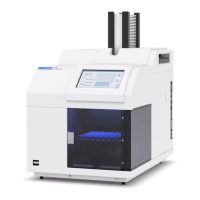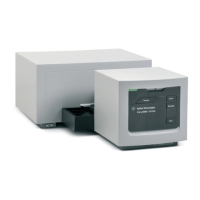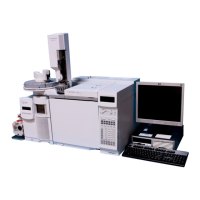5 Exhaust Venting
Venting other gases
Site Preparation Guide 29
Figure 5. Exhaust deflector G1530-80650
Venting other gases
During normal operation of the GC with many detector and inlet types, some of the carrier gas
and sample vents outside the instrument through the split vent, septum purge vent, and
detector exhaust. If any sample components are toxic or noxious, or if hydrogen is used as the
carrier gas or detector fuel gas, these exhausts must be vented to a fume hood.
Exhaust venting must comply with all local environmental and safety codes. Contact your
Environmental Health & Safety (EHS) specialist.
1 Place the GC in the hood or attach a large diameter venting tube to the relevant outlet for
proper ventilation. See “Exhaust vent fittings” on page 30.
2 To further prevent contamination from noxious gases, attach a chemical trap to the
vent(s).
3 If using an ECD, always connect the ECD exhaust vent to a fume hood or vent it to the
outside. See the latest revision of 10 CFR Part 20 (including Appendix B), or the applicable
state regulation. For countries other than the United States, consult with the appropriate
agency for equivalent requirements. Agilent recommends a vent line internal diameter of
6 mm (1/4-inch) or greater. With a line of this diameter, the length is not critical.
Table 9 Exhaust deflector part numbers
Instrument Part number
GC G1530-80650
7200/7250 Q-TOF GC/MS, GC Q-TOF G3850-80650

